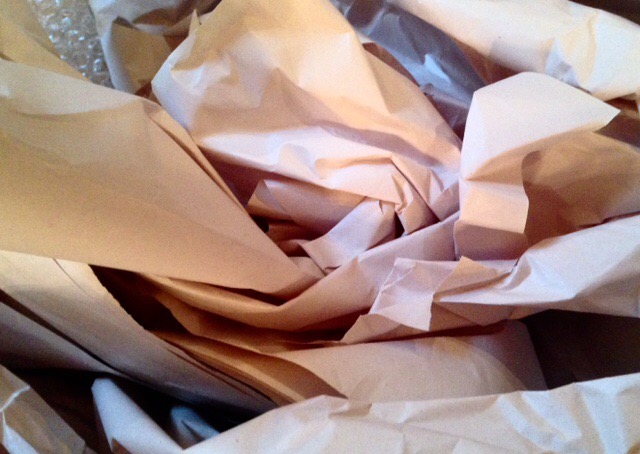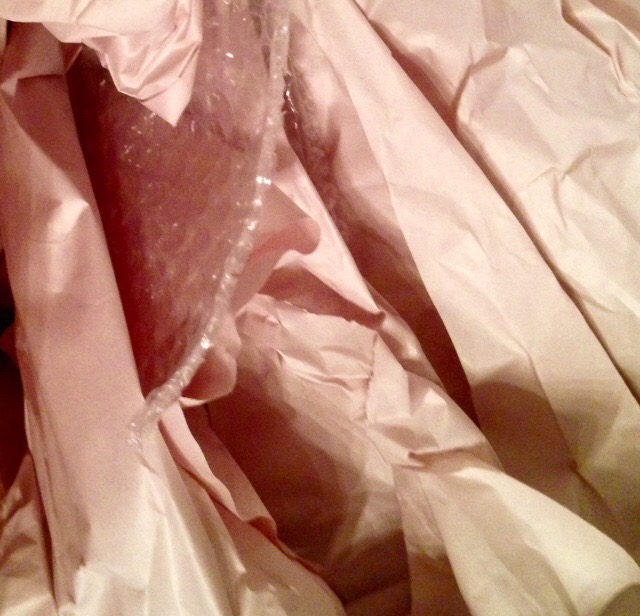Tom, the stroke-bound slacker, sits in the recliner while I’m carrying 40-pound boxes from basement to main to loft and finding a place for the pots and pans in the pantry and texting the packout crew to ask where our pillows are.
He wants me to stop and look at cat videos on Facebook.
Spouses of stroke victims, here’s a helpful hint: When you cannot labor through another step, just say cheerily to your spouse, “Hey, I have an idea! Remember when your occupational therapist said you should do this motion for practice at home?”
Then demonstrate the movement of a hand picking up a jar and placing it on a shelf.

This works particularly well if your spouse was an Army Ranger and you suggest that unpacking boxes is a “mission.” I mean, there are something like 45,018 boxes that came from our house to the rental, so surely unpacking them qualifies as a mission, right?
When I first looked at this mound of boxes, I thought, OH MY GOD look at all that STUFF!!! The only thing worse than watching your entire house get packed up is UNpacking those boxes.
The thing to remember is that this job was done by professional packers. The items are wrapped carefully and efficiently, but that means a low ratio of items to boxes. (For non-math majors: it means there are not very many items in each box.)
The only thing broken in this madness was a plastic recipe box that is approximately 45 years old. (How does the same crew pack and move half-gallon Mason jars full of herbal medicinal tinctures without breaking them, and yet they break a plastic box?)
But here’s the thing, professionals or not, it all has to get unpacked.
Today I covered half the dining table at the rental with “KITCHEN” boxes for the mission. Tom walked over there with his walker and stood up and took a knife and opened each of the boxes. He then lifted items out of the boxes, unwrapped them, and – get this! – folded the wrapping paper and bubble wrap and put them into neat piles that fit tidily back into the empty packing boxes.
It was an effort. Make no mistake about that. By the sixth box, he was really tired. But he did it. He unwrapped every item and he folded every piece of paper and bubble wrap and he sorted every item and he stood up the entire time.
That wasn’t all. We went on a little outing around the neighborhood. He walked up to a hiking trail in the neighborhood with his hemi-walker and scoped it out.
I think he can hike that trail this week.
He walked across the living room and to the car without his walker, too. Several times. Unassisted.
For those of you who have never had to care for someone who’s had a stroke, this may sound rather … Common. (I was going to say “pedestrian” but, um, no.)
So let me clue you in: When professionals who deal with stroke victims see Tom, and they hear that his stroke was July 7, they are amazed at what he can do.
We’re not talking about buying pants, here. Every step is a genuine miracle.
Today’s penny is a 1990. That’s the 100th anniversary of the invention of pre-cut cardboard boxes.
The Scottish-born Robert Gair invented the pre-cut cardboard or paperboard box in 1890 – flat pieces manufactured in bulk that folded into boxes. Gair’s invention came about as a result of an accident: he was a Brooklyn printer and paper-bag maker during the 1870s, and one day, while he was printing an order of seed bags, a metal ruler normally used to crease bags shifted in position and cut them. Gair discovered that by cutting and creasing in one operation he could make prefabricated paperboard boxes. Applying this idea to corrugated boxboard was a straightforward development when the material became available around the turn of the twentieth century.



Pedestrian. ?
LOL!!